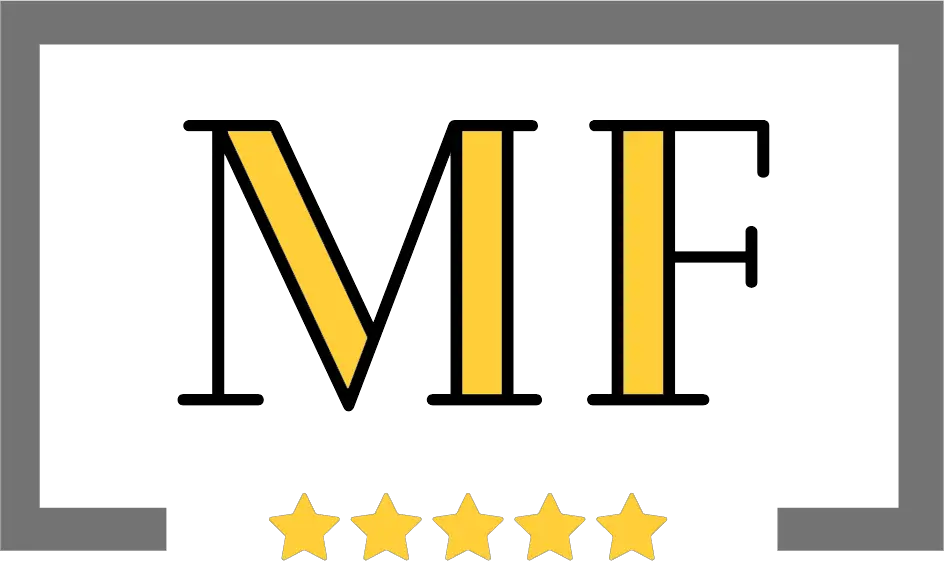Details
Understanding Home Insurance: An Introduction
Home insurance is a crucial element in safeguarding your most significant financial asset—your home. It is a form of property insurance designed to cover losses and damages to your house and the assets within it. Home insurance policies typically encompass various types of coverage to protect homeowners against potential risks, such as theft, fire, natural disasters, and other unforeseen events.
One of the primary reasons home insurance is essential is because it provides financial protection. In the event of a covered loss, such as a burglary or severe weather damage, having a comprehensive home insurance policy can help mitigate the costs of repairs or replacements. Without this coverage, homeowners may face substantial out-of-pocket expenses, which can be financially devastating.
Basic components of a standard home insurance policy usually include dwelling coverage, personal property coverage, liability protection, and additional living expenses (ALE) coverage. Dwelling coverage pertains to the structure of the home itself, safeguarding it against perils like fire or windstorms. Personal property coverage, on the other hand, protects the homeowner’s belongings, including furniture, electronics, and clothing, from similar risks.
Liability protection is another essential component, offering coverage if someone is injured on your property or if you accidentally cause damage to someone else’s property. This can help cover legal fees and medical expenses that may arise from such incidents. Lastly, additional living expenses coverage provides financial assistance for temporary housing and other expenses if your home becomes uninhabitable due to a covered loss.
In summary, understanding the fundamental aspects of home insurance is vital for making informed decisions about protecting your home and belongings. By recognizing the importance of this coverage and its various components, homeowners can better prepare for potential risks and ensure they have the necessary protection in place.
Types of Home Insurance Policies
When it comes to home insurance, there are several types of policies available, each tailored to meet different needs and living situations. Understanding these options is crucial in selecting the best home insurance that fits your specific circumstances. The most common policies range from HO-1 to HO-8, each offering varied levels of coverage.
HO-1: The HO-1 policy, also known as the basic form, provides limited coverage. It typically covers damages from events like fire, lightning, windstorms, hail, explosions, and theft. However, this type of policy is quite rare and may not be available in many areas due to its restrictive nature.
HO-2: The HO-2, or broad form policy, offers more extensive coverage than the HO-1. It includes all the perils covered by HO-1, plus additional risks such as falling objects, snow and ice damage, and accidental water overflow. This policy suits homeowners looking for wider protection at a moderate cost.
HO-3: The HO-3 policy is the most common type of home insurance. Known as the special form policy, it provides comprehensive coverage for the structure of your home and covers most perils, except those specifically excluded in the policy. Personal property is usually protected against named perils. This policy is ideal for most homeowners due to its broad coverage.
HO-4: Designed for renters, the HO-4 policy, or tenant’s insurance, covers personal property and liability but does not insure the structure itself. This policy is essential for renters who want to protect their belongings inside a rental property.
HO-5: The HO-5 policy, or comprehensive form, offers the most extensive coverage. It insures both the home and personal property against all perils, except those explicitly excluded. This option is best for homeowners seeking maximum protection and willing to pay higher premiums.
HO-6: The HO-6 policy is tailored for condominium owners. It covers personal property, liability, and the interior structure of the unit, often referred to as “walls-in” coverage. It is essential for condo owners looking to protect their own space while the condo association covers common areas.
HO-7: Similar to the HO-3, the HO-7 policy is designed for mobile or manufactured homes. It provides comprehensive coverage for the structure and personal property, making it a suitable choice for mobile home owners.
HO-8: The HO-8 policy is specifically designed for older homes. It offers coverage for homes that may not meet modern construction standards and provides cash value coverage rather than replacement cost. This is ideal for owners of historic or older homes looking to protect their investment.
Each type of home insurance policy is designed to cater to different needs and living situations. By understanding the distinctions between these policies, homeowners can make informed decisions to ensure they have the best home insurance coverage for their unique circumstances.
Key Coverage Areas in Home Insurance
Home insurance policies are designed to provide comprehensive protection for various aspects of your home and personal well-being. Understanding the key coverage areas in home insurance is crucial for ensuring you are adequately protected. The primary areas typically covered include dwelling protection, personal property, liability protection, and additional living expenses.
Dwelling Protection
Dwelling protection covers the physical structure of your home, including the walls, roof, floors, and built-in appliances. This coverage is vital as it ensures that in the event of damage caused by perils such as fire, windstorms, or vandalism, you can repair or rebuild your home. For example, if a severe storm damages your roof, dwelling protection would cover the cost of repairs or replacement.
Personal Property
Personal property coverage extends to the belongings inside your home, such as furniture, electronics, clothing, and other personal items. This aspect of home insurance protects against losses due to theft, fire, or other covered events. For instance, if a fire damages your home and destroys your furniture and electronics, personal property coverage would reimburse you for the cost of replacing these items.
Liability Protection
Liability protection is an essential component of home insurance that safeguards you against legal and medical expenses if someone is injured on your property or if you cause damage to someone else’s property. This can include scenarios such as a guest slipping on your icy driveway or your dog damaging a neighbor’s fence. Liability coverage would help cover the costs associated with these incidents, including legal fees and medical bills.
Additional Living Expenses
Additional living expenses (ALE) coverage comes into play if your home is rendered uninhabitable due to a covered event, such as a fire or severe storm. ALE coverage helps pay for temporary housing, meals, and other necessary expenses while your home is being repaired or rebuilt. For example, if a fire forces you out of your home, ALE would cover the cost of renting an apartment and dining out until you can return to your residence.
Understanding these key coverage areas ensures that you can make informed decisions about your home insurance policy, providing peace of mind and financial protection against unexpected events.
When choosing the best home insurance, understanding the factors that influence your premiums is crucial. Various elements can affect the cost of home insurance, from the location of your home to its specific characteristics, the coverage limits you select, the amount of your deductible, and even your credit score.
Location
The geographic location of your home plays a significant role in determining your insurance premiums. Homes situated in areas prone to natural disasters such as floods, earthquakes, or hurricanes typically have higher premiums. Proximity to emergency services, crime rates, and local building codes can also impact the cost. To potentially lower premiums, consider investing in homes in safer neighborhoods or areas with lower risks of natural disasters.
Home Characteristics
The age, size, and construction materials of your home can affect your insurance costs. Older homes or those built using materials that are more susceptible to damage may result in higher premiums. Upgrading your home with modern, durable materials and maintaining its condition can help mitigate these costs. Additionally, installing safety features like smoke detectors, security systems, and storm shutters can lead to discounts.
Coverage Limits
The extent of coverage you choose significantly impacts your premiums. Higher coverage limits provide greater protection but come at a higher cost. Conversely, lower limits reduce premiums but may leave you underinsured. It is essential to balance adequate coverage with affordability by evaluating your home’s value and potential risks.
Deductibles
Your deductible is the amount you pay out of pocket before insurance coverage kicks in. Opting for a higher deductible can reduce your premiums but means you’ll pay more in the event of a claim. Conversely, a lower deductible increases premiums but lowers out-of-pocket costs. Assess your financial situation to determine the right balance between deductible and premium costs.
Credit Score
Insurance companies often use your credit score as an indicator of risk. A higher credit score can result in lower premiums, while a lower score may increase costs. Improving your credit score by paying bills on time, reducing debt, and regularly checking your credit report for errors can help you secure better rates.
In conclusion, being aware of the factors that influence home insurance premiums enables homeowners to make informed decisions. By considering location, home characteristics, coverage limits, deductibles, and credit scores, homeowners can take proactive steps to manage and potentially lower their insurance costs.
How to Compare Home Insurance Providers
When selecting the best home insurance, it is imperative to thoroughly compare different providers to ensure you receive comprehensive coverage and excellent service. Begin by researching the reputations of various home insurance providers. A company’s reputation can provide insights into its reliability and customer satisfaction levels. This can be done through independent review platforms, industry ratings, and word-of-mouth recommendations.
Reading customer reviews is another crucial step. Reviews offer firsthand accounts of policyholder experiences, highlighting both positive and negative aspects of a provider’s service. Pay particular attention to feedback on the claims process, as this is a significant component of home insurance. An efficient and transparent claims process can make a considerable difference when you need to file a claim.
Understanding the claims process in detail is essential. Ensure that the provider has a straightforward, hassle-free claims process. Look for information on how to file a claim, the average time for claim resolution, and the level of support provided throughout the process. A provider with a user-friendly claims process can greatly alleviate the stress during an emergency.
Evaluating the financial stability of home insurance providers is equally important. Financial stability ensures that the company can pay out claims even during widespread disasters. Check financial ratings from agencies such as A.M. Best, Standard & Poor’s, or Moody’s. These ratings give you a clear picture of the company’s financial health and ability to meet its obligations.
Here is a checklist to assist you in comparing home insurance providers:
- Company reputation and customer satisfaction
- Customer reviews and feedback
- Clarity and efficiency of the claims process
- Financial stability and ratings
- Range of coverage options and flexibility
- Premium costs and discounts offered
- Customer service and support availability
By meticulously evaluating these factors, you can make an informed decision when selecting a home insurance provider that best meets your needs. This thorough approach ensures that you are protected by a reliable and financially sound insurer, providing peace of mind for your most valuable asset—your home.
Common Exclusions and Limitations in Home Insurance
When selecting a home insurance policy, it is crucial to understand the common exclusions and limitations that may impact your coverage. Home insurance policies typically have a standard set of exclusions, which can leave homeowners vulnerable to certain risks if not properly addressed. By being aware of these exclusions, you can take proactive steps to ensure comprehensive protection for your home.
One of the most prevalent exclusions in home insurance policies is coverage for natural disasters. Events such as earthquakes, floods, and hurricanes are often not covered under standard home insurance. These exclusions exist because the financial risk associated with natural disasters is substantial, and insurers may require separate policies or riders to cover these events. Homeowners in high-risk areas should consider additional coverage options, such as earthquake insurance or flood insurance, to safeguard their properties against these unpredictable events.
High-value items are another common limitation in home insurance policies. While standard policies provide coverage for personal belongings, there are often caps on the amount reimbursed for high-value items like jewelry, artwork, or collectibles. To ensure adequate protection for these valuables, homeowners should consider purchasing a personal property rider or a separate valuables insurance policy. These options provide specific coverage limits tailored to the value of the items, offering peace of mind in case of loss or theft.
Maintenance issues also fall under common exclusions in home insurance policies. Damage resulting from neglect or failure to maintain the property is typically not covered. For instance, if a roof collapses due to lack of maintenance or a plumbing system fails due to neglect, the homeowner may be responsible for the repair costs. Regular upkeep and preventive maintenance are essential to avoid such exclusions. Homeowners should document maintenance efforts and keep records of repairs to support any future claims.
Understanding these common exclusions and limitations is vital for homeowners seeking comprehensive coverage. By recognizing the gaps in standard home insurance policies and exploring additional coverage options, such as riders or separate policies, you can ensure that your home and valuables are adequately protected against unforeseen events and potential risks.
The Claims Process: What Homeowners Need to Know
Filing a home insurance claim can be a daunting process, especially during the stressful aftermath of property damage or loss. Understanding the steps involved can significantly ease this burden and ensure that you receive the compensation you are entitled to. The claims process typically begins with initial reporting and moves through documentation, communication with insurers, and finally, settlement.
Firstly, it is imperative to report the incident to your insurance provider as soon as possible. Immediate notification allows the insurer to start the claims process promptly and ensures that you adhere to any deadlines stipulated in your policy. Be prepared with your policy number and a detailed account of the incident when you make the initial report.
Next, thoroughly document the damage. Take clear, comprehensive photographs and videos of all affected areas and items. Create a detailed inventory of damaged or lost property, including descriptions, purchase dates, and estimated values. This documentation is crucial as it provides tangible evidence to support your claim and can expedite the assessment process.
Effective communication with your insurance company is vital throughout the claims process. Maintain a record of all interactions, including phone calls and emails, noting the date, time, and names of the representatives you speak with. This practice helps in tracking the progress of your claim and serves as a reference if any disputes arise.
Homeowners should also be aware of common pitfalls that can complicate the claims process. Avoid making permanent repairs before the insurance adjuster assesses the damage, as this may lead to disputes over the extent of loss. However, do take temporary measures to prevent further damage, such as covering broken windows or tarping a leaking roof. Keep all receipts for these emergency repairs, as these expenses may be reimbursed.
Finally, ensure that you understand the terms of the settlement offered by your insurer. Review the settlement amount and any applicable deductibles or depreciation factors. If you disagree with the assessment, you have the right to negotiate or request a re-evaluation. Being well-informed and prepared can make the home insurance claims process considerably smoother and more efficient.
Tips for Choosing the Best Home Insurance Policy for Your Needs
Choosing the best home insurance policy tailored to your specific needs involves a thorough assessment of various factors. To begin with, it’s crucial to assess your personal risk. This includes evaluating the likelihood of natural disasters in your area, the crime rate, and the age and condition of your home. Understanding these risks will help you determine the type and extent of coverage you require.
Next, evaluate your coverage needs. Standard home insurance policies typically cover damage to your home and personal property due to events like fire, theft, and certain natural disasters. However, they may not cover everything. Consider additional coverage for high-value items, such as jewelry or electronics, and think about whether you need flood or earthquake insurance, which are often excluded from standard policies.
Balancing cost versus benefit is another essential aspect. While it may be tempting to opt for the cheapest policy, this could leave you underinsured. Compare different policies and providers, looking not only at the price but also at the extent of coverage, deductibles, and limits. An affordable policy that provides comprehensive coverage and a manageable deductible is often a better choice than a low-cost option with high deductibles and limited protection.
To assist in making an informed decision, follow this step-by-step guide:
1. **Assess Your Home and Personal Risk:** Consider location-specific risks, home age and condition, and personal property value.2. **Determine Coverage Needs:** Identify essential coverage types and additional protections required for your situation.3. **Compare Policies:** Evaluate multiple insurance providers, focusing on coverage extent, deductibles, limits, and exclusions.4. **Check Provider Reputation:** Research customer reviews and ratings to ensure the insurer’s reliability and customer service quality.5. **Seek Discounts:** Inquire about available discounts, such as bundling home and auto insurance or installing security systems.6. **Review and Update Regularly:** Periodically reassess your insurance policy to ensure it continues to meet your evolving needs.
By following these tips and using the step-by-step guide, you can select a home insurance policy that best fits your needs, providing peace of mind and financial protection.























There are no reviews yet.